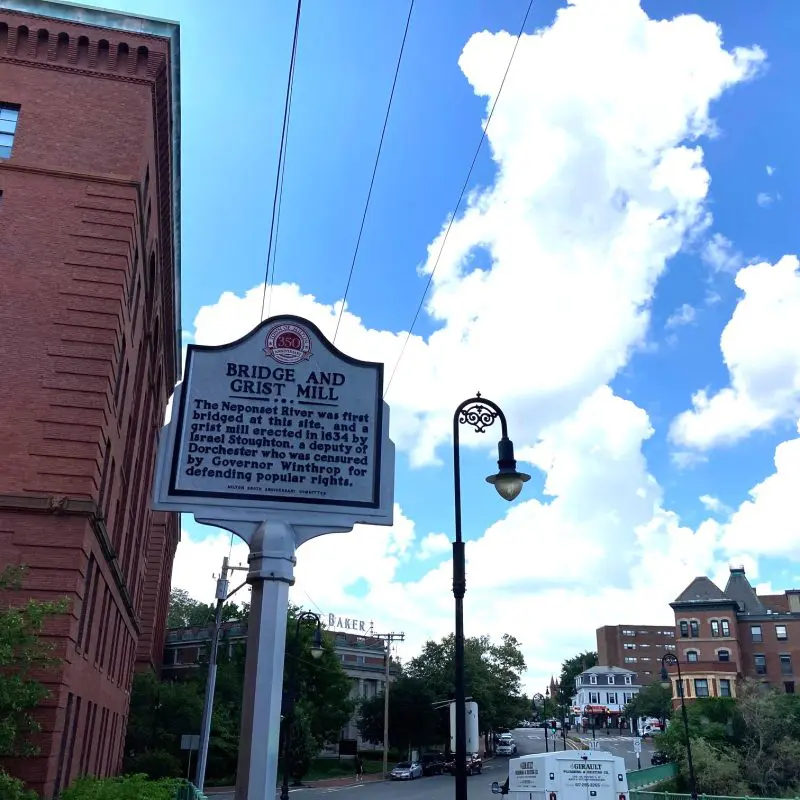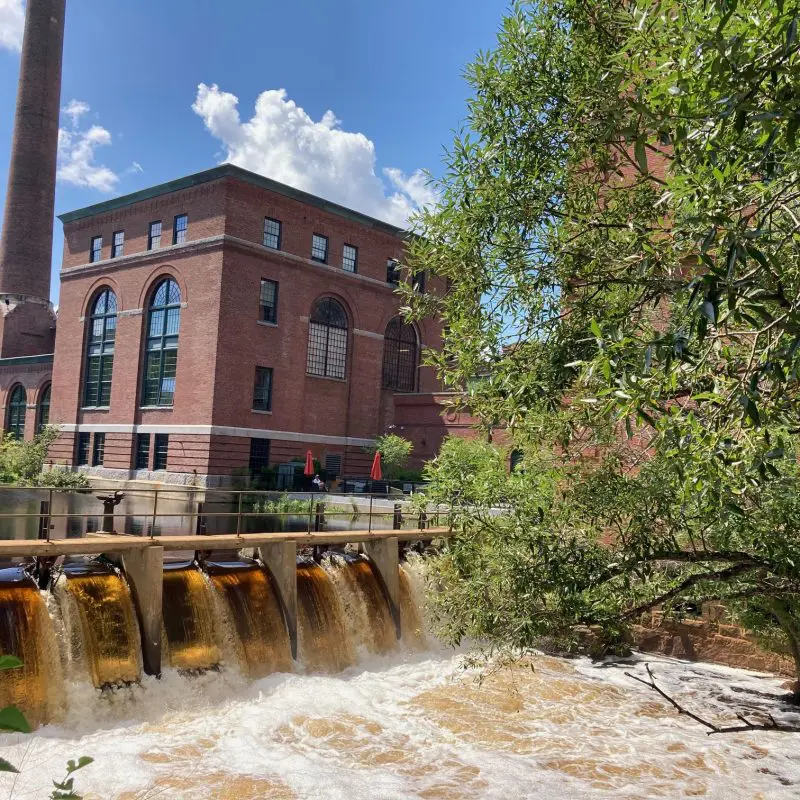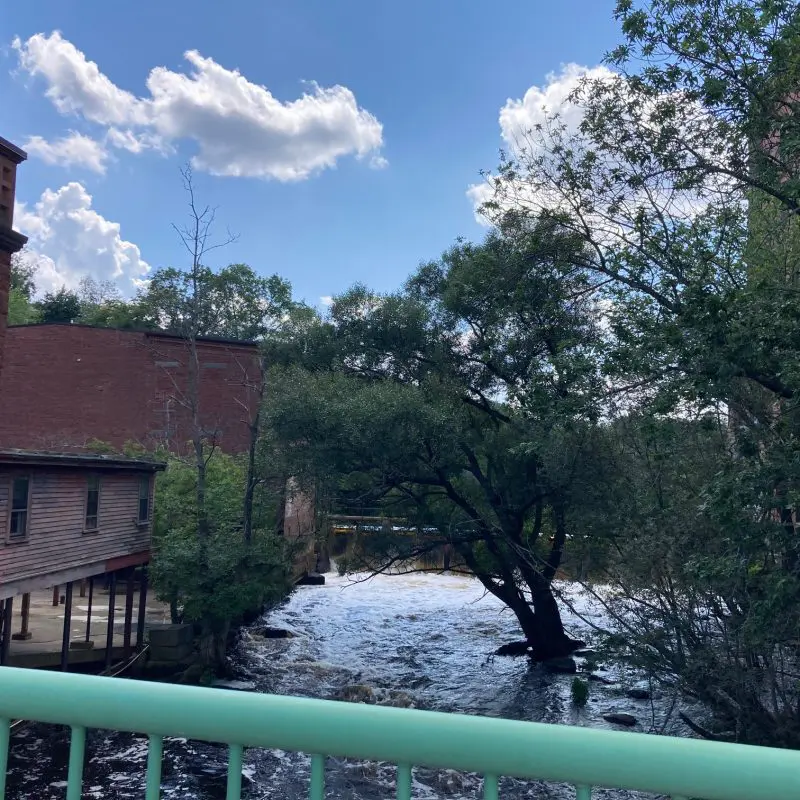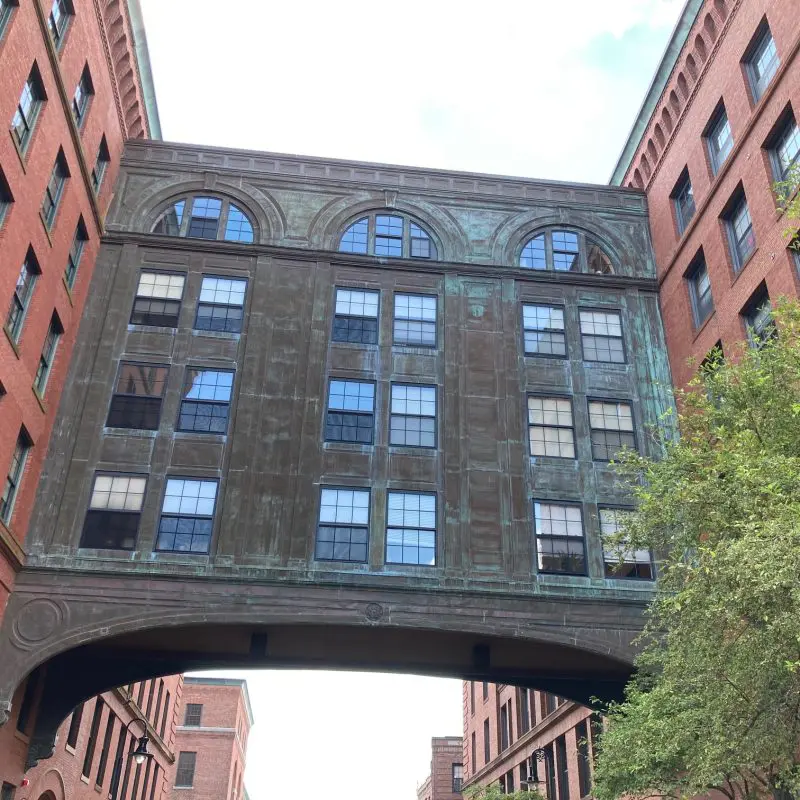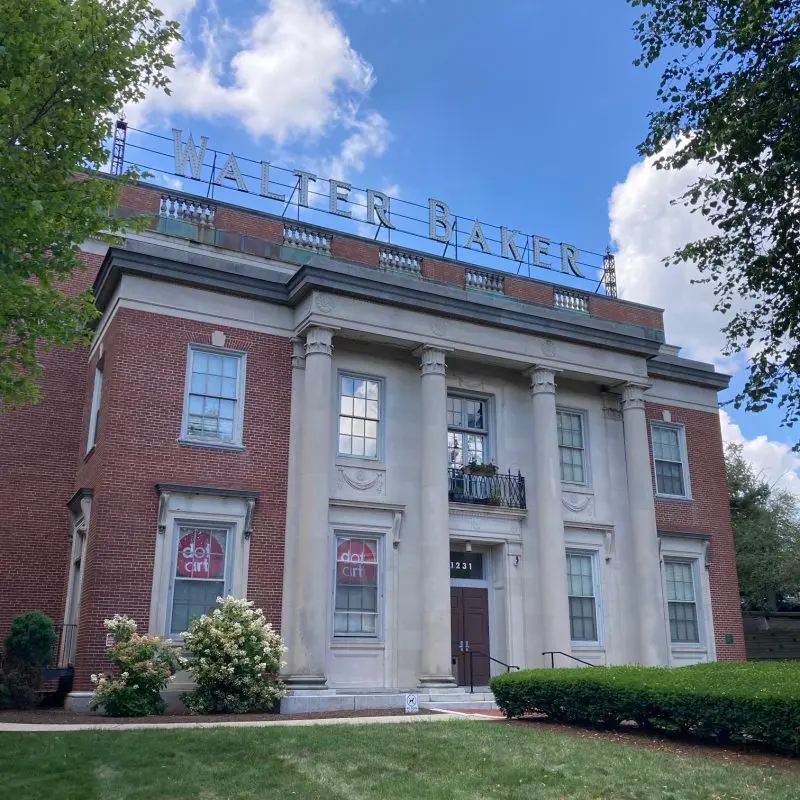At the southern end of Dorchester is Lower Mills, situated on the Neponset River.
More About Lower Mills
One of the most charming Boston neighborhoods is Lower Mills at the southern end of Dorchester. Situated on the Neponset River, the area was a center of industry from the earliest days of the colony.
Israel Stoughton sailed from England to the New World in the 1630s, along with several other members of the Stoughton family. He was one of the original “Grantees of Dorchester lands” and was also granted the right to build the first water mill on the Neponset River in 1633. He built a fish weir, selling alewives to the colonists, and kept a horse bridge over the river in good repair. He was one of the Dorchester Plantation’s largest landowners; upon his death in 1645, he left 300 acres to Harvard College. When he died, his son William also inherited a portion of his father’s 5,000 acres. William was only 14 years old in 1645; he became a wealthy landowner in his own right.
Israel Stoughton also represented Dorchester at the first General Court when it convened in Boston in 1634. The following year, he published a pamphlet which offended the Governor and Assistants, as he criticized the colony’s constitution and denied these officials some of the powers they claimed to hold. Stoughton was then banned from holding public office for three years, although after reconciliation he was once again allowed back on the court in 1637.
During the Pequot War, Israel Stoughton was commander of the Massachusetts Bay Colony militia, and was known to treat the native people cruelly. He made servants of Pequot prisoners and owned enslaved Africans, including Dorcas the Blackmore. Dorcas was Stoughton’s slave from 1641, the year she also joined Dorchester’s First Church, until his death in England in 1645. It is thought Dorcas continued to live with Stoughton’s widow, Elizabeth, after Israel’s death. In 1653, members of the First Church, with Rev. Richard Mather’s support, sought to purchase her freedom through fundraising. Although the exact date she obtained her freedom is unclear, Dorcas may have been the first enslaved person in Colonial America to be manumitted.
Another early resident of Dorchester was Bray Wilkins, who arrived from either England or, more likely, Wales, in 1630. He was in Dorchester by 1632, where he was granted 16 acres. He took the Oath of a Freeman there in 1634. In Dorchester, Wilkins maintained a ferry service across the Neponset River. Around 1654, he left Dorchester and purchased land in the western part of Salem Village (today Middleton). There, he raised a family and pursued various commercial opportunities, including mining iron ore (unsuccessfully) and running a timber and logging business.
Sometime in the 1680s, Bray’s granddaughter Margaret married John Willard, a man not only outside the tightly-knit Wilkins family but also an outsider to Salem Villagers. This may have made him a perfect target to the rest of the family. When the troubles of 1692 began, and John Willard was accused of witchcraft, Bray Wilkins agreed with the accusers, believing himself bewitched by the man who had married his granddaughter. In fact, ten members of the Wilkins family testified against Willard during his trial. John Willard was executed for witchcraft on August 19, 1692. Bray Wilkins continued to live in western Salem Village until 1702. He died there at the age of 92.
Another patriarch of what would become an influential New England family was William Hathorne, who arrived in the New World in 1630, on the Arbella. He served as a selectman in Dorchester, along with Israel Stoughton, in 1634. Like Bray Wilkins, he moved north. In 1637, he received a 200-acre land grant in Salem Village, which included Hathorne Hill, later the site of the Danvers State Hospital in the nineteenth and twentieth centuries. Hathorne would eventually own more than 1,000 acres. He was also an eminent member of the court and of the military for decades. He was known to be especially cruel in his prosecution of Quakers, ordering Ann Coleman to be publicly whipped in the streets of Salem. His son, Judge John Hathorne, inherited his father’s taste for extreme punishment. John Hathorne was considered the most extreme of magistrates during the Salem witch trials. Salem’s favorite son, author Nathaniel Hawthorne, was William’s great-great-great grandson.
The most famous industry once located in Lower Mills was the Baker Chocolate Company, vestiges of which are still visible to this day. Originally founded in 1764 by an Irish chocolatier named James Hannon and American physician Dr. James Baker as “Hannon’s Best Chocolate,” it became the Baker Chocolate Company in 1780 and by 1849, under Walter Baker, became a national brand. In 1966, 200 years after its inception, Baker Chocolate production moved from Dorchester to Dover, DE. Today Baker Chocolate is owned by Kraft Heinz.


